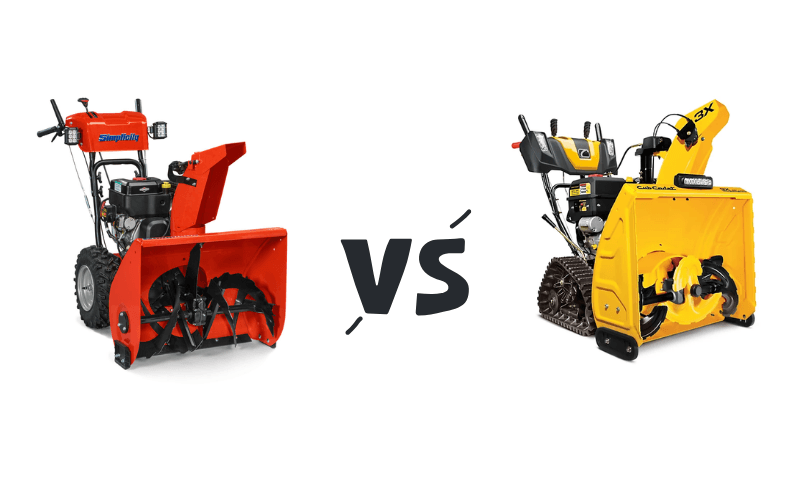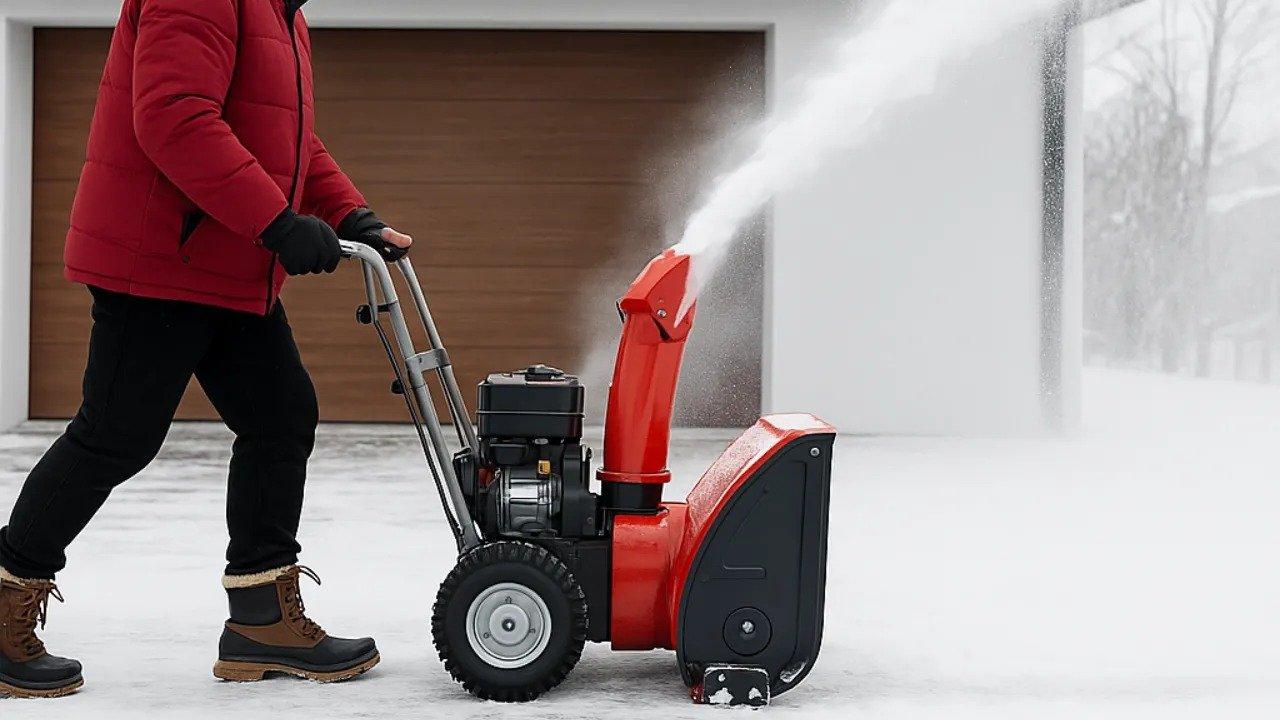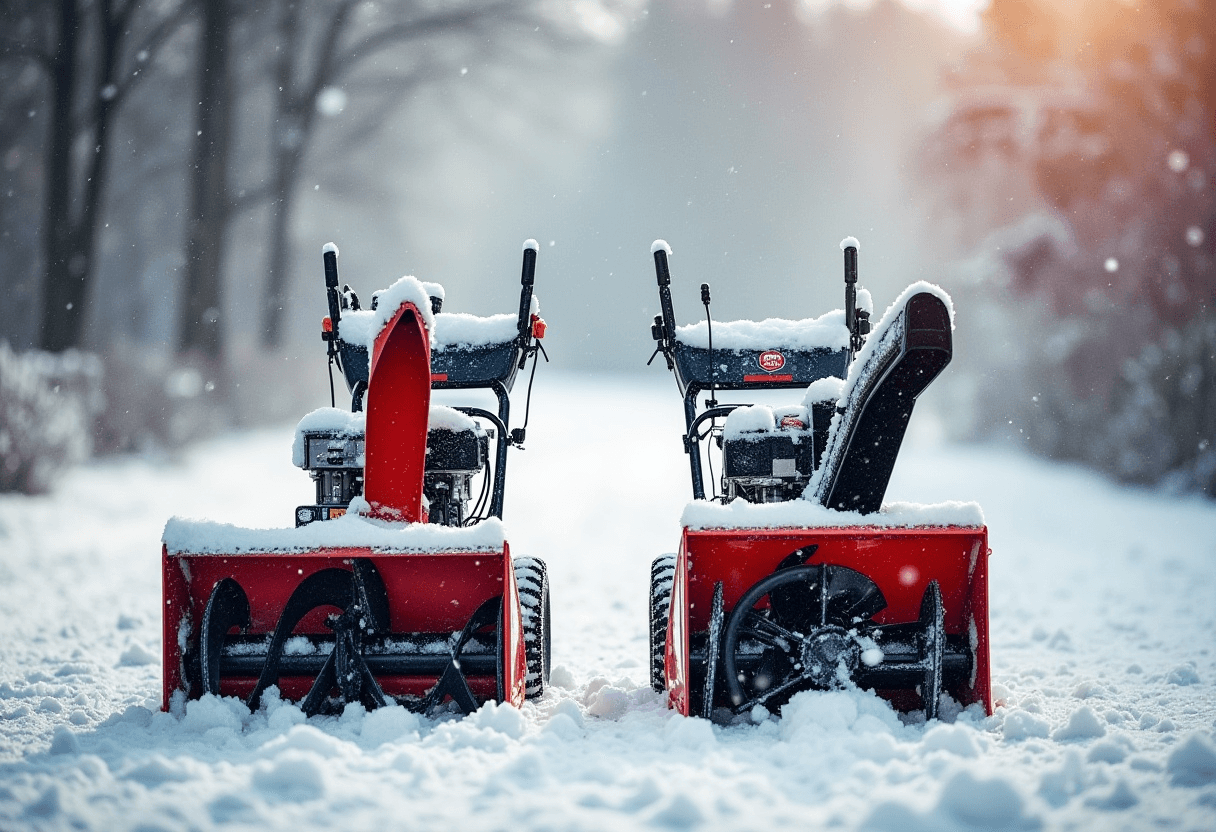Review
Two-Stage vs Three-Stage Snow Blower: Which is Better?
AZparts Team
Updated on October 19, 2025
5 min read
As winter arrives, the need for snow clearing becomes more urgent than ever. Choosing the right snow blower not only saves time but also significantly reduces labor. Among the popular models, two-stage (2-stage) and three-stage (3-stage) snow blowers often confuse people due to their differences in performance and price. Let's explore with AZParts the key differences between these two types of snow blowers in the article below.

1. What Is a Three-Stage Snow Blower?
A three-stage snow blower is a powerful, heavy-duty machine built to handle extreme winter conditions. Unlike single- or two-stage models, it features a third component—an accelerator—that works alongside the auger and impeller. This allows it to break up compacted snow and ice more efficiently and throw it farther, making it ideal for clearing large areas after heavy snowfall.
Thanks to its enhanced power and performance, a three-stage snow blower is especially useful for homeowners in regions that regularly experience deep snow, icy build-up, and sub-zero temperatures.
A three-stage snow blower is one of the most powerful snow removal machines available, designed for extreme conditions and heavy, compacted snow. It goes beyond the standard auger and impeller system by adding an accelerator, which grinds icy snow before sending it out through the chute. This feature allows it to handle wet, dense, or icy snow much faster than two-stage models.
These blowers often come in gas-powered versions, providing higher torque and throwing distances of up to 50 feet, ideal for long driveways, parking lots, and thick drifts. If you already own a three-stage unit, regular inspection of key components like augers and impellers helps keep performance consistent. You can easily find replacement snow blower parts at AZParts to maintain top efficiency through every winter storm.
2. What Is a Two-Stage Snow Blower?
A two-stage snow blower uses a dual-mechanism system - an auger that gathers snow and an impeller that expels it through a chute. This design makes it more powerful than single-stage machines while remaining easier to maneuver than a three-stage blower.
Two-stage snow blowers can clear up to 12–16 inches of snow and are perfect for moderate to heavy snowfalls. Available in both gas and electric models, they’re a great fit for homeowners with medium to large driveways.
Because it has fewer moving parts, maintenance is simpler. However, it’s essential to keep filters, belts, and augers in good condition. AZParts provides two-stage snow blower replacement parts to help your unit perform smoothly all season long.
3. Difference Between 2-Stage and 3-Stage Snow Blower
If you’re comparing the best two-stage snow blower and the latest three-stage snow blower, the key differences lie in power, snow type handling, and maintenance needs. Two-stage models are more cost-effective and easier to handle, while three-stage machines deliver unmatched efficiency in thick or frozen snow. Below is a side-by-side comparison to help you decide which one fits your needs best.
Criteria | Two-Stage Snow Blower (2-Stage) | Three-Stage Snow Blower (3-Stage) |
Operation | Snow is gathered by the auger and pushed out through the impeller | Includes a third auger to break the snow before pushing it out |
Snow Clearing Efficiency | Handles moderate and heavy snow, ideal for residential use | Highly effective for thick, frozen snow, suitable for harsh conditions |
Ideal Snow Conditions | Light to moderate snow | Wet, heavy, frozen snow |
Throwing Distance & Clearing Width | Throws snow about 10-15m, clearing width 60-70cm | Throws snow further (15-20m), wider clearing width (70-90cm) |
Maneuverability & Drive System | Lighter, easier to maneuver, usually has a wheel drive system | Heavier, more stable, with more speed options |
Maintenance & Complexity | Easier to repair, fewer moving parts | More complex design, requires specialized replacement parts |
Cost | Cost-effective, lower initial investment | Higher cost due to more complex design and higher power output |
4. Pros and Cons of 2-Stage and 3-Stage Snow Blower
Before buying, compare each type’s strengths to find the best snow blower for your property size and snow conditions.
4.1 Two-Stage Snow Blower (2-Stage)
Pros:
- Great for moderate to heavy snow, ideal for driveways or uneven terrain.
- Compatible with both electric and gas-powered models.
- Longer throwing distance (up to 15 meters) and wide clearing path.
- Lower maintenance and initial cost.
Cons:
- May struggle with icy or packed snow.
- Slightly bulky for smaller yards.
4.2 Three-Stage Snow Blower (3-Stage)
Pros:
- Excels in wet, frozen, or deep snow conditions.
- Clears snow up to 50% faster than two-stage units.
- Long throwing distance and wide clearing width.
Cons:
- Higher upfront cost and heavier to maneuver.
- Requires more frequent maintenance.
If you already own a snow blower and want to keep it running like new, browse high-quality replacement snow blower parts from AZParts to ensure lasting performance every winter.

Each snow blower type offers unique benefits based on your specific needs and conditions (Source: Freepik)
5. FAQs about Difference between 2 stage and 3 stage Snow Blower
5.1. Is a 3-stage blower worth the extra cost?
A 3-stage snow blower is worth considering for areas with heavy, frozen snow and large areas that need to be cleared. Although it comes at a higher price, the efficiency and time saved can offset the cost if you need to clear snow regularly.
5.2. Can a 2-stage handle packed or icy snow?
A 2-stage snow blower can handle light-packed snow or ice, but it may struggle with thick, heavily frozen snow. For more effective handling of such snow, a 3-stage snow blower would be a better choice.
5.3. Which one lasts longer?
Both types of snow blowers are durable when properly maintained, but the 3-stage model has a more complex design, requiring careful maintenance. The 2-stage model is simpler and easier to maintain, yet still offers high durability when used correctly.
Choosing between a 2-stage and a 3-stage snow blower depends on your specific needs, such as snow conditions, area size, and usage frequency. A 3-stage snow blower offers higher performance and better handling of heavy, frozen snow, but comes at a higher cost and requires more thorough maintenance. On the other hand, a 2-stage snow blower is suitable for basic needs, is more affordable, and can still effectively handle light to moderate snow.
Regardless of which type you choose, proper maintenance will help extend its lifespan and optimize performance. If you need to replace parts for your snow blower, be sure to check out quality replacement products at AZParts to keep your machine running at its best.
Contact Information:
8 The Green, Ste A, Dover, Delaware 19901-3618, United States
support@azparts.com
support@azparts.com
Snowblower
Further Reading
Further Reading




%2520Cropped_1747039495.jpg&w=3840&q=75)
_1750053523.jpg&w=3840&q=75)